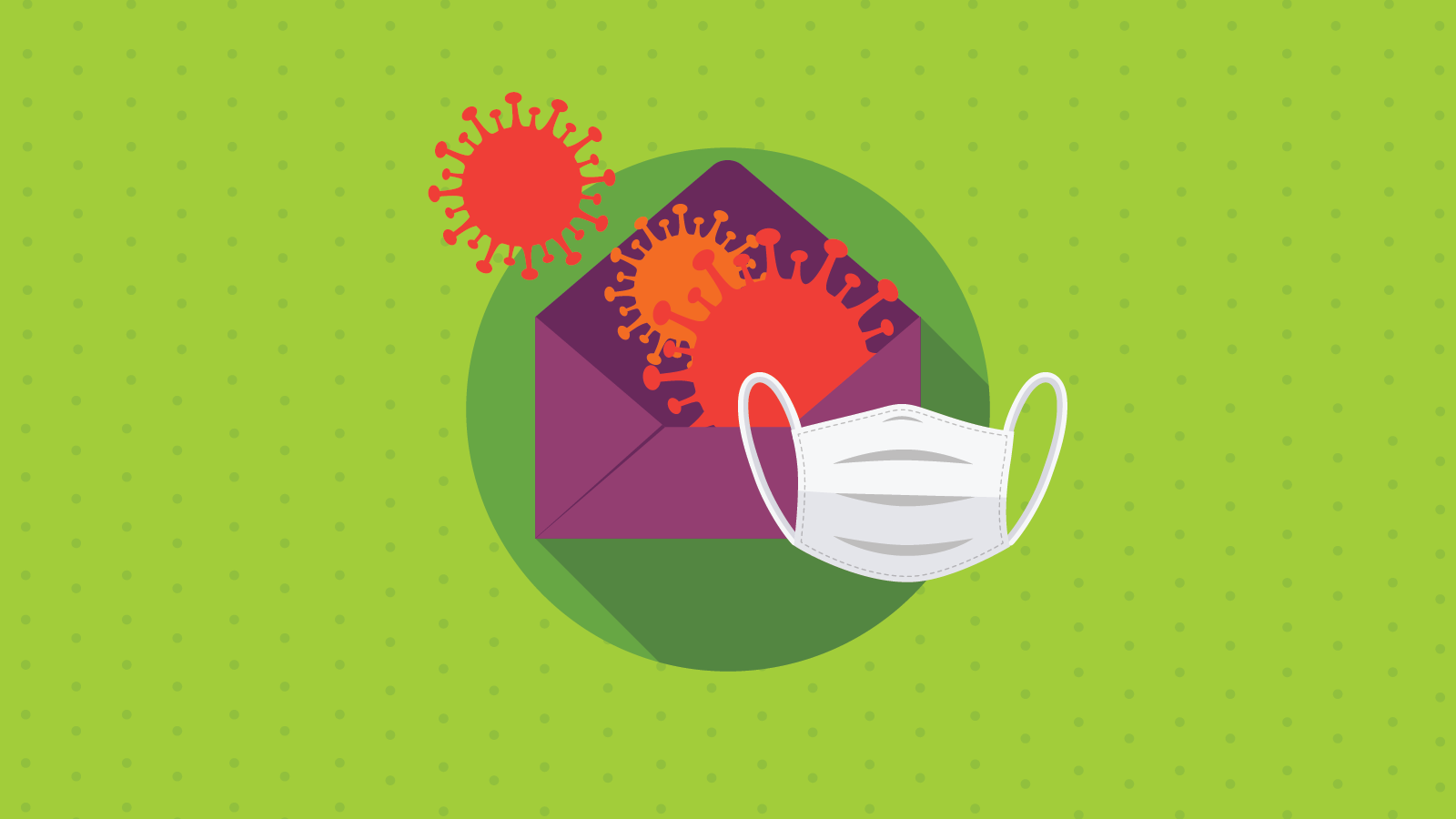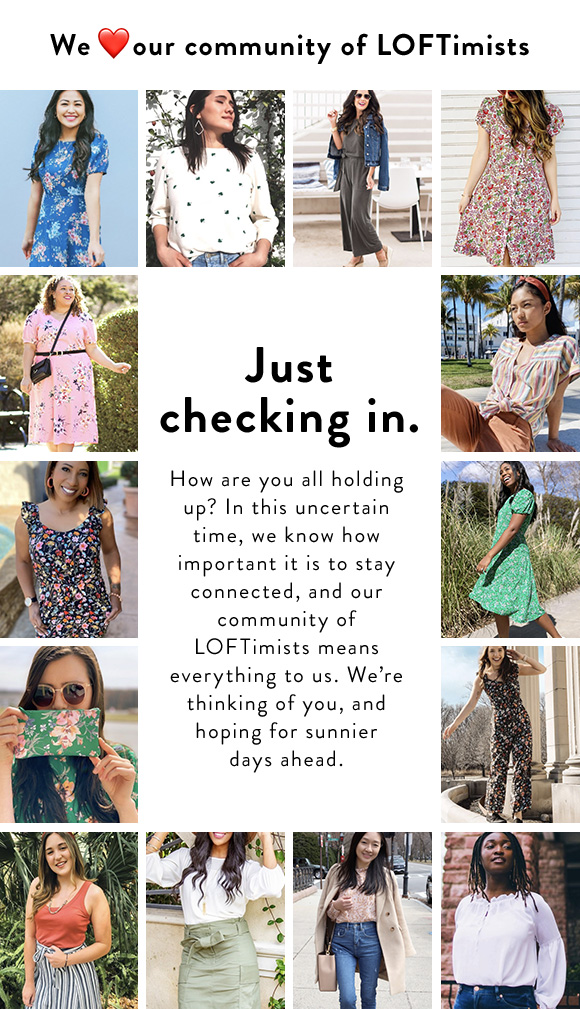Industry News
How COVID-19 Emails Help Brands Stay Top of Mind and In Business

Industry News

Remember March? When your inbox was flooded with messages beginning with “In these unprecedented times…”? Raise your hand if you saw that about 10 times too many. <raises hand>
Five months later, and we’re still facing one of the biggest challenges to hit the globe in decades. The COVID-19 pandemic affects everyone, which was made very clear when the president tested positive for the virus.
Thankfully, we were prepared for some of the changes. In the last 20 years or so, our world has gone mostly virtual. People are telecommuting, Face-Timing friends and family that they haven’t talked to in years, and ordering their goods online through apps and e-stores for delivery.
Because of this digital shift, email has truly become the MVP in these unprecedented times. Here’s how our favorite marketing channel has helped businesses stay in front of their consumers and remain top of mind, in a helpful way.
So, what happened? At first, brands went silent. Email slowed waaaaay down. Brick and mortar brands began trickling out information around changes in store hours, closures, and how safety was of the highest priority. Non-profits went silent, with donors furloughed and to avoid the image of insensitivity, fundraising campaigns stopped.
The tension in inboxes was palpable. And the need to say something was high. Opportunity was there – should we send every contact we have information on how we’re handling COVID-19? And the messages came … from every brand you may have interacted with in the last 20 years and some you may not have. Permissions were forgotten, what’s explicit consent?
It wasn’t only retail stores and restaurants using email for COVID-19 communication. Many industries reached out to customers through inboxes. Any company that regularly met with clients and customers in-person, such as law firms, financial services, and healthcare, needed to quickly create a new way of doing business. Email is the channel most companies used to make that initial connection and to keep their brands top-of-mind with customers as the situation unfolded around the country.
But then the tide began to turn, and companies realized that informational updates were not what their customers wanted or needed anymore. Friendly “Froms” flipped from brand names to CEOs, and we began to all be in this together. Some brands did an amazing job managing the pivot from very legal, scripted emails to a softer, more compassionate tone with a hint of promotion. For example, look at how LOFT, an online women’s clothing store, made a connection with its community using email.

Check out some other emails we loved in April.
The realization that people and brands were connecting via the inbox began. Stores were closed, but people could still shop, and retail could still generate revenue. Light bulbs went off, email is a golden opportunity to check in on our customers and still get our messaging out!
With the ability to shop conveniently and safely from home, the overhead of brick-and-mortar stores’ budget line items were shifted to free shipping. Shopping is something to get your mind off the uncertainty and scariness of what’s going on in the world, and this was seen as a window of opportunity!
This is where things really started to get interesting. While send volumes seemed to stay relatively flat, open rates jumped more than 20% in March and April year over year.
Conversion rates also saw a strong lift from March to April, increasing more than 22% year over year. So, not only were people reading more email communications from brands during the outset of the pandemic, they were acting on them, too.
Another surprise comes when you see that engagement shifted from mobile to desktop, which saw a 10% increase in opens. Don’t let that fool you, though. Ensuring emails render just as well on a mobile device as a desktop is still very important.
The pandemic pushed certain changes into hyper-speed. For instance, many companies were already toying with the idea of a remote workforce. The virus’s impact exponentially increased the adoption of telecommuting, and many organizations will never go back. The same goes for things like online shopping for everyday essentials, curbside pickup of grocery items, and the rise of food delivery platforms. They’ve become a way of life.
Marketing’s rate of change is accelerating, too. There’s been a steady increase in the use of digital over traditional media in the typical marketing mix. With COVID-19, even more businesses began seeing the value of shifting their advertising and marketing strategies. At this point, digital marketing is marketing.
For some businesses, it was as simple as launching a website or developing an app. For others, it meant investing in marketing automation or digging into their analytics for better customer insights. Because digital marketing is easily trackable, it’s much easier to see if you’re getting an acceptable ROI. And, marketing that you know is working is crucial when your nation falls into a recession — you don’t want to waste those dollars.
Email analytics are among the most important stats marketers review. That’s because email is an essential channel for promotions, customer loyalty, and nurturing leads. Research shows 83% of successful marketers planned to invest in email in 2020. Where does it rank in your 2021 marketing budget?
Change is inevitable, but email remains one of the most personal and effective channels for reaching customers with important messages, especially during times of crisis. You need a solid email program in place so that your business or brand will be prepared the next time it becomes necessary to quickly and efficiently communicate with the people you serve.
So, what happens now? And how do brands continue to ride the wave of email’s dominance in the COVID era?
With holiday emails approaching, we’ll see a shift in the way we experience Cyber Week and even the holidays in general. What once was a time where people wanted to go to the mall, may now be a time where online shopping is even more critical. Teams are already planning for how to navigate and strategically capture their audiences this season with longer online promotions and different messaging, understanding that not all of their customers can afford to splurge this year as they have previously.
It makes no difference what line of business you’re in, we’re all still trying to figure out what the “new normal” will look like for marketing in a post-pandemic world. Email on Acid is ready to be a reliable partner in your marketing stack, helping you future-proof your marketing and communication efforts — no matter what happens next.